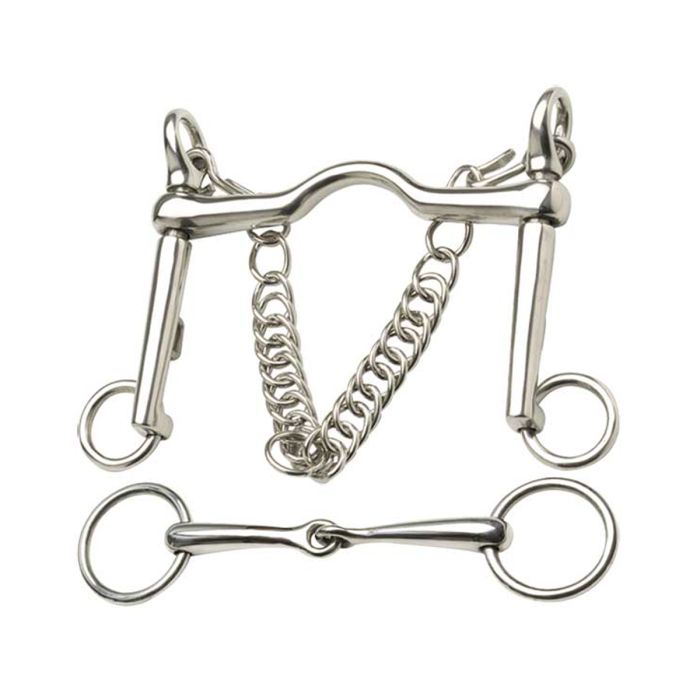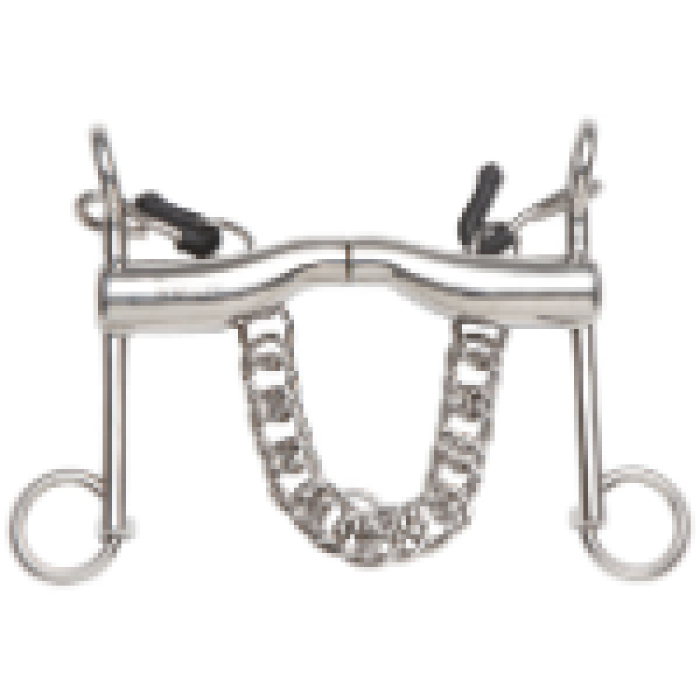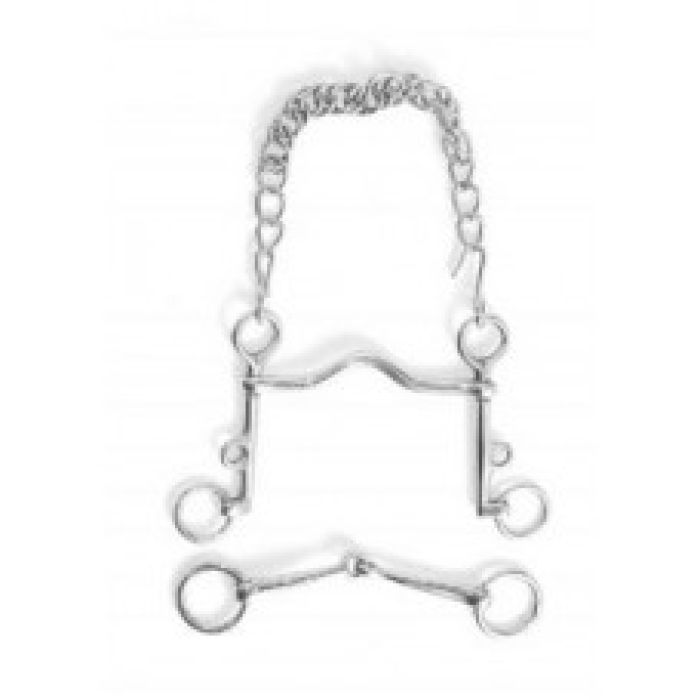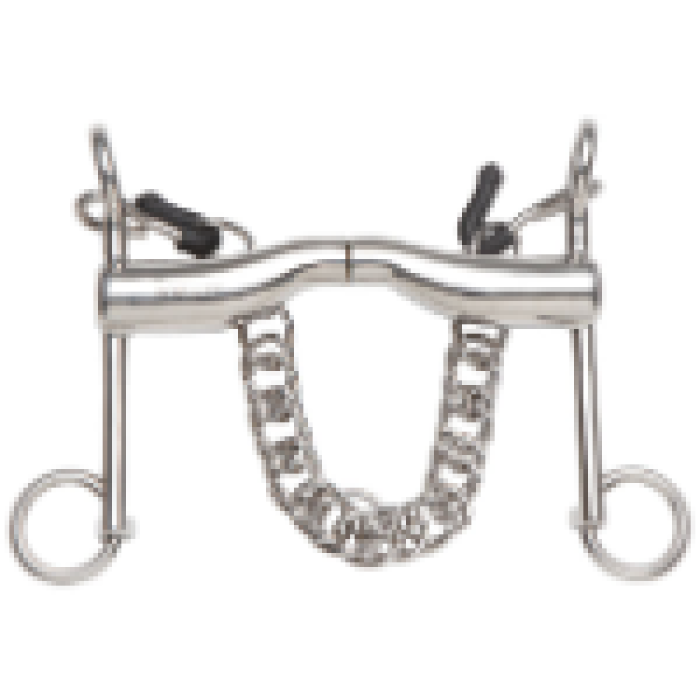In a double bridle arrangement, the curb or Weymouth serves to assist in achieving maximum flexion from the horse while preserving a light contact.
The curb acts on several parts of the horse at once to achieve this result. In the mouth, the curb puts pressure over the tongue and bars, which can be more or less severe depending on how tight the curb chain is kept, how much of a port the mouthpiece has, and how long the shanks are (a too tight or too loose curb chain, a higher port, and longer shanks are all more severe).
The curb uses a leverage action, since it attaches to the cheek and headpieces of the bridle at a point above the mouthpiece, and the reins attach to the end of a shank (essentially a lever) a few inches below the mouthpiece. When the rein is engaged, this lever action puts some pressure on the poll of the horse through the cheek and headpiece, and on the mouth and jaw through essentially squeezing the lower jaw between the mouthpiece and the curb chain running under the jaw. A tighter curb chain limits the amount of angle that the curb shanks can travel, thus causing less pressure to be put on the poll and jaw. However, this does mean that the action comes into play more immediately upon contacting the rein. The ideal point at which the curb chain should engage is when the cheeks are approximately at a 45 degree angle to the mouth of the horse. In any case, it should be clear that the curb is a very sharp instrument and should be used only in the hands of those that have a very sensitive touch.




